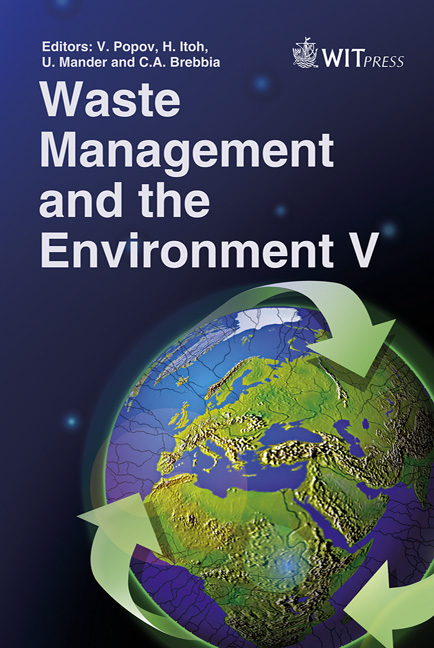Numerical Optimisation Of Operating Conditions Of Waste To Energy
Price
Free (open access)
Transaction
Volume
140
Pages
11
Page Range
31 - 41
Published
2010
Size
1,115 kb
Paper DOI
10.2495/WM100041
Copyright
WIT Press
Author(s)
M. Kapitler, F. Kokalj & N. Samec
Abstract
The combustion process, using municipal solid waste (MSW) as a fuel in waste to energy plant, calls for a detailed understanding of these phenomena. On the one hand, this process depends on many input parameters, like MSW proximate and ultimate analysis, the season of the year, primary and secondary inlet air velocity, and on the other hand on the output parameters such as temperature or mass flow rate (MFR) of combustion products on the exhaust. The variability and mutual dependence of these parameters can be difficult to manage in practice. Moreover, another problem is how these parameters can be tuned to achieve the optimal combustion with minimal pollutants emission during the plant design phase already. To meet these goals, waste to energy plant with bed combustion is investigated by using computational fluid dynamics (CFD) approach with ANSYS CFX 12.0 code in the WORKBENCH 2 environment. In this paper, the adequate variable input boundary conditions which are based on the real measurement and practical calculations of known MSW composition from other authors are used and the whole computational work is updated with real plant geometry and the appropriate turbulence, combustion and heat transfer models. Furthermore, the operating parameters were optimized on output parameters through trade-off study. Different operating conditions were varied and the fluid flow direction, residence time, temperature field, velocity field, nitric oxide formation and combustion products through plant combustion chamber and preheat intersection in 3D were predicted and visualized. The optimization in real time has shown the amount of each input parameters to meet the optimal operating conditions. Finally, the response charts between the input and output parameters are presented to monitor the dependence among these parameters. Further simulations have to be done to include the geometry dimensions as input parameters. Keywords: municipal solid waste (MSW) modelling, bed combustion, computational fluid dynamics (CFD), operating conditions, numerical optimisation, trade-off study, parameter sensitivity, response charts.
Keywords
municipal solid waste (MSW) modelling, bed combustion,computational fluid dynamics (CFD), operating conditions, numerical optimisation, trade-off study, parameter sensitivity, response charts





